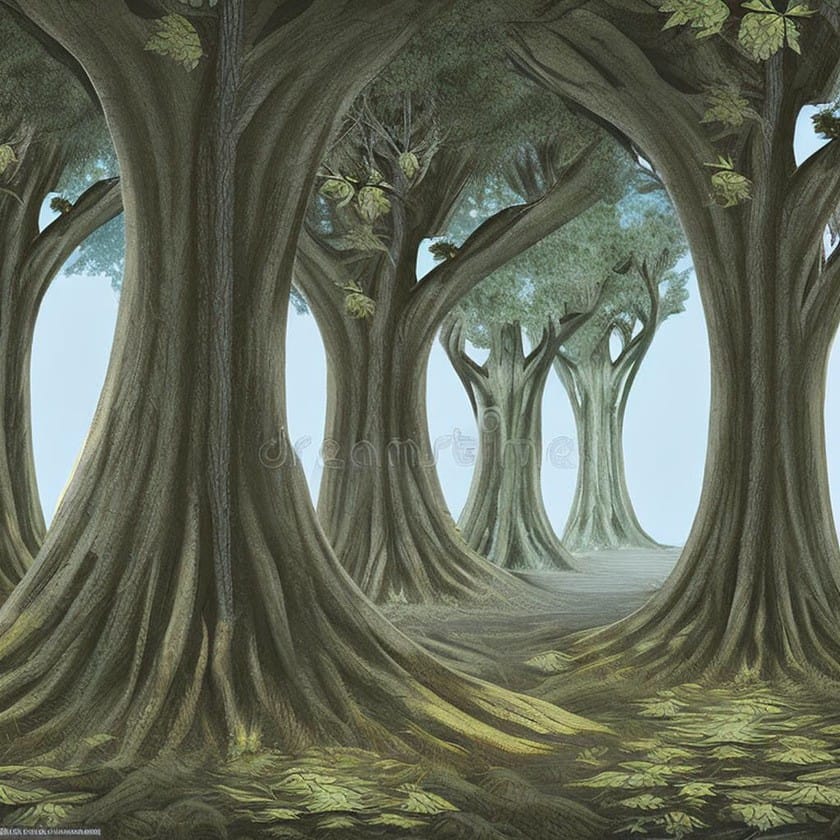Sacred trees in Europe
Sacred trees have played an important role in European culture for thousands of years. These trees were believed to be imbued with spiritual significance and were often the focus of rituals and ceremonies. In this blog post, we’ll take a closer look at some of the most famous sacred trees in Europe and explore their cultural and spiritual significance.
The Oak of Dodona, Greece
The Oak of Dodona is one of the most famous sacred trees in Greece. According to legend, it was here that Zeus first spoke to mortals through the rustling of the oak leaves. The tree was located in the ancient city of Dodona in Epirus and was the center of a famous oracle. Pilgrims would travel from far and wide to consult the oracle, which was believed to be able to answer questions about the future.
The Oak of Dodona was also believed to be the home of the nymphs, or nature spirits, who were associated with the tree’s life-giving properties. The ancient Greeks believed that the tree had the power to heal sickness and protect against evil spirits.
Today, the Oak of Dodona no longer stands, but a replica has been planted in its place. Visitors can still visit the site and learn about the tree’s significance in Greek mythology.
The Yew Trees of Kingley Vale, England
The yew trees of Kingley Vale in West Sussex, England are believed to be some of the oldest trees in the country. Some of the trees are thought to be over 2,000 years old, and their twisted trunks and gnarled branches have made them a favorite spot for hikers and nature lovers.
In pagan mythology, the yew tree was associated with death and rebirth. Its evergreen leaves were believed to symbolize eternal life, while its poisonous berries were associated with death and the afterlife.
The yew trees of Kingley Vale have played an important role in English history as well. They are thought to have been used by the Saxons as a meeting place, and later by the Normans as a site for the construction of a medieval chapel.
Today, the yew trees of Kingley Vale are protected as a nature reserve, and visitors can explore the ancient woodland and learn about the trees’ cultural significance.
The Céide Fields, Ireland
The Céide Fields in County Mayo, Ireland are home to an ancient forest of oak, yew, and birch trees that have been preserved in the bogland for thousands of years. The forest was buried under layers of peat during the Bronze Age and has only recently been uncovered by archaeologists.
The Céide Fields are believed to be the largest stone-age monument in the world and were built over 5,000 years ago. The site is also home to a series of megalithic tombs, or burial mounds, that were used by the ancient Celts for ceremonial purposes.
The ancient forest of the Céide Fields has been preserved in the bogland for thousands of years, and its discovery has provided archaeologists with a unique insight into ancient Irish culture and beliefs.
The Tree of Life, Azerbaijan
The Tree of Life in Azerbaijan is a 2,000-year-old plane tree that is said to have been planted by the legendary hero, Korkut. According to legend, Korkut planted the tree as a symbol of the unity of the Turkic people.
The Tree of Life has played an important role in Azerbaijani culture and is a popular destination for pilgrims and tourists alike. Its gnarled trunk and twisted branches have been carved with inscriptions, and the tree is surrounded by a complex of buildings and shrines.
The Tree of Life is believed to have healing properties, and visitors often tie ribbons to its branches as a symbol of their hopes and dreams.
Sacred trees have played an important role in European culture and mythology for thousands of years. They have been associated with life, death, and rebirth, and have been the focus of rituals and ceremonies. Today, many of these trees are protected as nature reserves or historical monuments, and visitors can explore their cultural and spiritual significance.
Was Azerbaijan part of Europe?
Azerbaijan is located in the South Caucasus region and shares borders with Russia to the north, Georgia to the northwest, Armenia to the west and Iran to the south. The location of Azerbaijan has been a matter of debate, as it is sometimes considered to be part of Europe and sometimes part of Asia.
From a geographic and cultural standpoint, Azerbaijan has both European and Asian characteristics. Azerbaijan is a member of the Council of Europe and has also participated in the Eurovision Song Contest since 2008, which are indicators of its European connections. At the same time, Azerbaijan’s history and culture have been influenced by its location at the crossroads of Europe and Asia, and it is a member of the Turkic Council and the Non-Aligned Movement, which includes countries from both continents.
In terms of international organizations and agreements, Azerbaijan is generally considered to be part of Europe. However, it is important to note that the categorization of Azerbaijan as either a European or an Asian country can be somewhat ambiguous and depends on the context in which it is being discussed.
Featured video
Shop tip
Sacred trees in Europe On Amazon

Thank you for likes, shares and comments! 🌳🌴🌲🌵
Source OpenAI’s chatGPT Language Models, Dalle, AI trot and Fleeky
images Picsart and MIB
Invest in your future
Take time to learn
Embark on your journey in affiliate marketing and website creation alongside an incredible community and myself. Invest in your future by dedicating time to learn and earn. Take all the time you need to master the basics before aiming higher. Give it a try and sign up for free. You won't regret it! Discover the possibilities for yourself...


